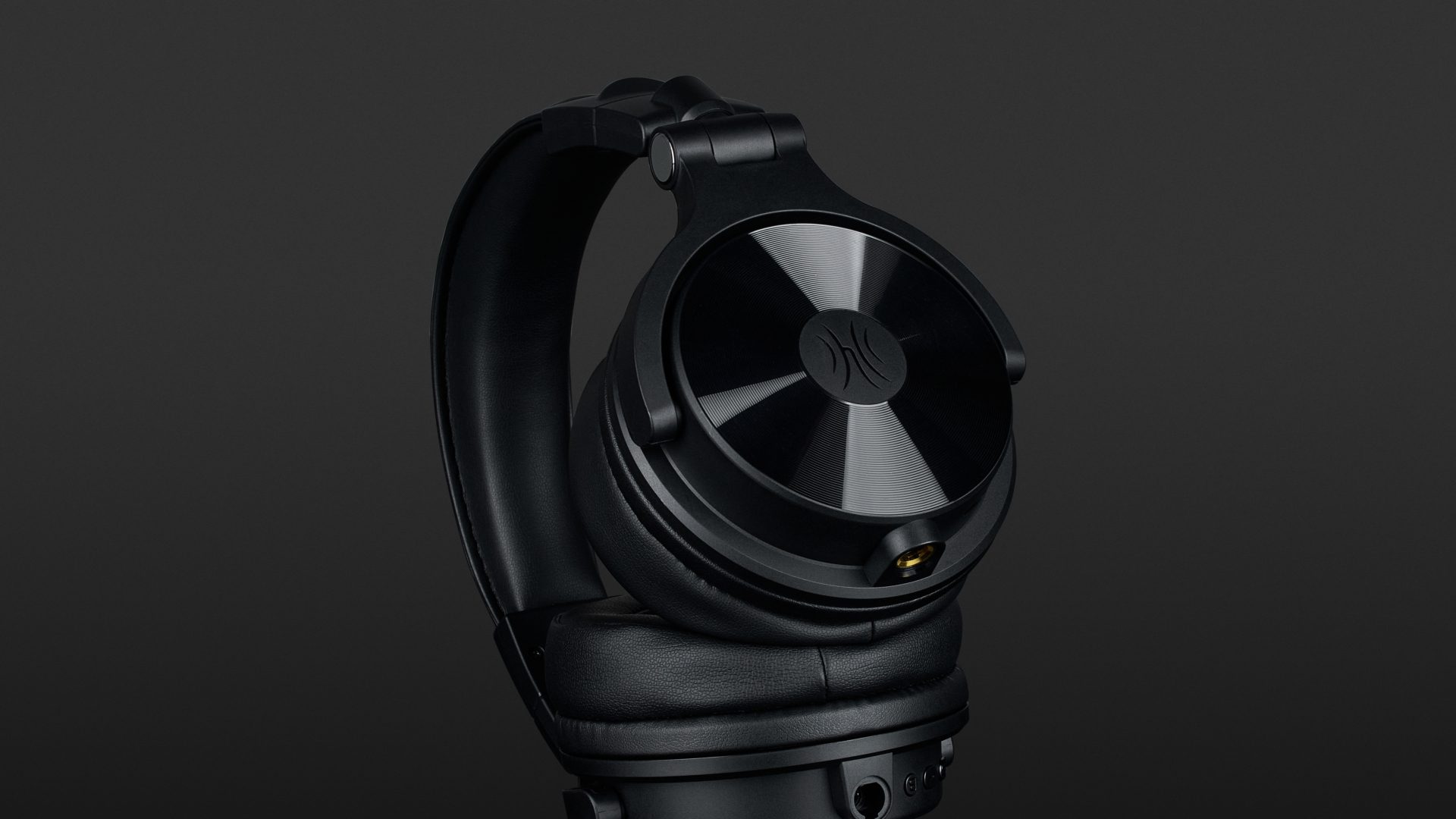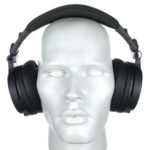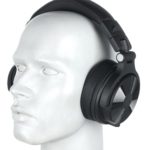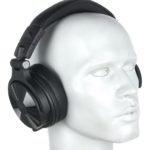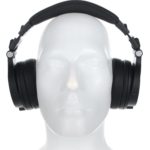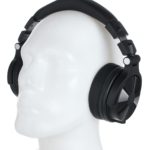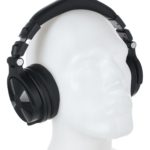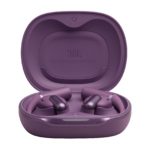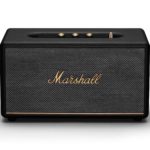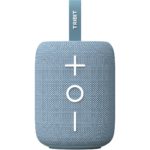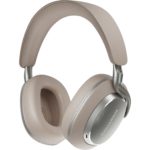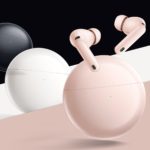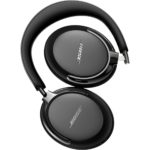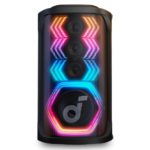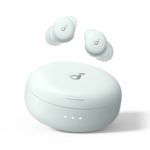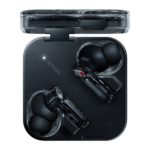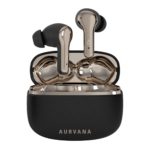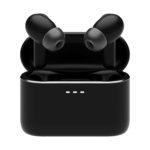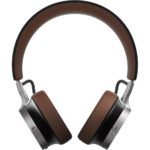The OneOdio Studio Max 1 are an appealing all-round solution for anyone looking for a closed-back headphone with powerful bass, versatile connectivity and a relatively low price tag.
- Virtually latency-free transmission
- Multiple connection options
- Extremely long battery life
- Good passive noise attenuation
- Flexible monitoring positions
- Slightly weak in the treble range
- Fit can feel a little loose depending on head shape
- Button operation takes getting used to
With the OneOdio Studio Max 1, Chinese manufacturer OneOdio introduces a DJ headphone that can be used via cable, Bluetooth or—most notably—through an included wireless transmitter. This transmitter provides audio transmission with almost no perceptible delay, making the Studio Max 1 an intriguing option for DJs, FOH engineers and gamers alike.
Table of Contents

Technical features
The OneOdio Studio Max 1 is an over-ear, closed-back dynamic headphone that supports standard jack, mini-jack, Bluetooth, or its bundled transmitter (OneOdio M1). Using OneOdio’s proprietary “RAPID WILL+” protocol (Rapid Wireless Low Latency Link), the wireless system achieves an ultra-low latency of just 20 milliseconds—vastly outperforming traditional Bluetooth connections, which typically suffer delays of 200–300 ms.
Our measurements confirmed this: latency was actually closer to 19 ms, making the Studio Max 1 one of the fastest wireless DJ solutions available, beaten only by AlphaTheta Sonic Link (9 ms) and AIAIAI W+ Link (16 ms).
In standard Bluetooth mode, latency returns to the usual levels, but thanks to LDAC support, hi-res audio streaming remains possible.
- OneOdio didn’t lie – with a latency of just 19 ms, the OneOdio Studio Max 1 even beats the manufacturer’s specifications.
The 50 mm drivers, manufactured in Japan, cover a frequency range from 20 Hz to 40 kHz and reach a peak SPL of around 98 dB. Power comes from a 1,000 mAh lithium-ion battery, providing up to 120 hours of playback, with a full recharge taking about two hours. A quick five-minute top-up yields an impressive five hours of use.
For traditionalists, the included spiral cable (approx. 1.5–2 m) offers both mini-jack and standard jack terminations, with the headphones themselves supporting both formats directly.
Build & handling
The OneOdio Studio Max 1 is on the bulkier side and feels more at home on larger heads. The thick 2.5 cm ear pads and 3 cm deep housings make for a 5 cm build depth, while the 9.5 cm pad diameter ensures full over-ear coverage.
Both ear cups rotate 180° horizontally and vertically, allowing for flexible single-ear or neck monitoring, though this also makes them feel slightly unstable in hand. The folding hinges add convenience for transport.
Controls are located on the right ear cup: four tactile buttons handle playback, calls, modes and features—amounting to around 20 functions in total. While OneOdio differentiated button surfaces for better orientation, operation can still feel fiddly. A more intuitive touch-surface on the large cup housing would have been a welcome improvement. Similarly, the tiny LED battery indicator is hard to see; a segmented LED bar would have been far clearer.
- Another exciting application of the OneOdio is wireless cue/PFL listening when controlling the FOH mixing console remotely.
Sound performance
Passive isolation is strong, making these headphones a reliable choice both in public transport and in the DJ booth. Listening to “People Fall Away” by Attraktta, the OneOdio Studio Max 1 impressed with its tight, rounded bass reproduction and solid overall balance. However, the treble response lacked sparkle, leaving cymbals and upper textures somewhat dull. While this is less problematic in loud club environments—where a treble reduction can even protect hearing—at lower listening levels the sound would benefit from a little extra crispness above 8 kHz.
Switching to “Marie” by Toi et moi, the stereo image was decent but not as three-dimensional as reference models. Midrange colouring gave the sound a particular character that deviated from neutrality, though not unpleasantly so. Integration with the OneOdio app—currently available only for the Focus A6—would allow users to fine-tune the EQ, and would be a welcome addition for the OneOdio Studio Max 1.
The onboard Bass Boost mode adds significant low-end punch, though oddly it only works in standard Bluetooth mode—not with the low-latency transmitter, where DJs would arguably need it most.
Verdict
The OneOdio Studio Max 1 feels most at home in the DJ booth, where its powerful bass, excellent noise isolation and near-zero-latency wireless transmission shine. The treble range could use more refinement, especially for critical listening, but for loud performance environments this is less of an issue.
Standout strengths include:
- the impressively low-latency M1 transmitter
- wide range of connection options
- long battery life
- practical build for both DJing and FOH mixing
The fit could be a little tighter, and button operation isn’t perfect, but overall the OneOdio Studio Max 1 delivers a compelling package at a highly competitive price. For DJs looking to explore wireless cueing without perceptible lag, this is currently the most affordable option on the market.
Technical specifications
- Ear couplingOver-ear
- TypeClosed-back
- Transducer principleDynamic
- Frequency response (headphones)20 Hz – 40 kHz
- Impedance38.35 ohms
- Sound pressure level (SPL)104.97 dB
- Pressure averaged from big and small head607 g
- Weight with cable328 g
- Weight without cable328 g
- Cable length150 cm
What's in the box
- M1 transmitter
- USB-C charging cable
- Standard/mini-jack spiral cable
- Short mini-jack cable
- Mini-jack adapter
- Carrying pouch
Special features
- Bluetooth: Version: 5.3
- Codecs: SBC, AAC, LDAC










